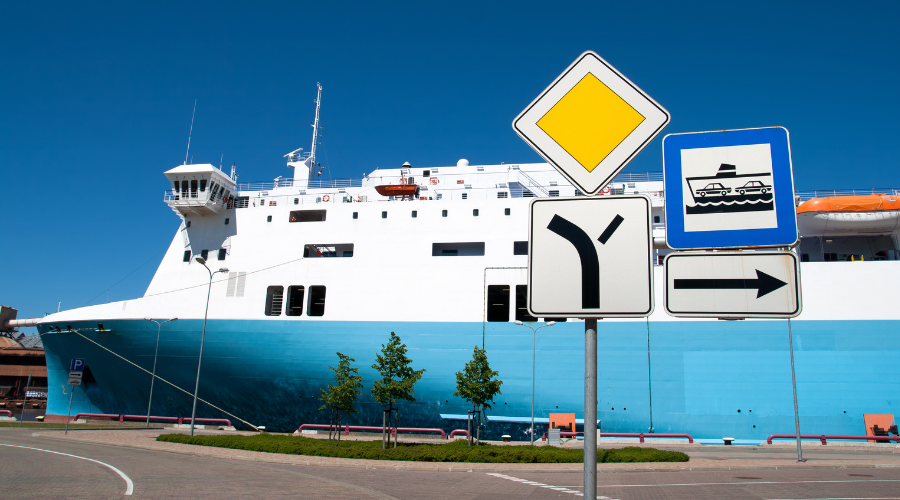4 Ways Video Analytics Can Increase Efficiency Across Multi-Site Transit Hubs

Visualize Business Intelligence from Multiple Sites
To optimize efficiencies in operations, security, and planning, transportation organizations need actionable, quantifiable data about security incidents, demographics, and pedestrian and vehicle traffic. From rail and air to marine travel, the data serves purposes ranging from planning infrastructure, preparing for major events, refining marketing strategies, enhancing security, and scheduling staff for peak holiday travel periods. However, because transit organizations typically oversee multiple terminals, stations, maintenance facilities, parking facilities, restaurants, and retail areas, these operational elements quickly grow into significant challenges, making accurate data even more critical. For this reason, both single and multi-site transit hubs are turning to video analytics to provide the business intelligence data they need to succeed.
Video Analytics for Single and Multi-Site Transit Hubs
Transit hubs can address the difficulties of cross-site data collection by leveraging their video surveillance (CCTV) with the addition of video content analytics software. In general, transit agencies use CCTV cameras to monitor areas in real-time and collect video evidence for security purposes. Without video content analysis, most of this video footage is never reviewed or utilized, because manual review strains human resources and is prone to error. It is impossible for a human operator to comprehend and analyze all the objects, events, and behaviors captured by video. However, the addition of video analytics software allows video footage to be repurposed into valuable information that can impact physical security and beyond.
Video analytics systems can also aggregate data at unique sites or deliver intelligence from multiple sites. Management teams can have video analytics operators oversee one or more sites in a transit network and gather the aggregated data from centralized hub or command center. For instance, operators at each site can customize their own real-time alerts, receive the alerts directly, and proactively respond to on-site situations. To get the big picture in a single pane of glass, operators at a central command center can receive reports that aggregate the real-time alerts or other data — like user demographics, footfall, traffic, and navigation trends — from all locations within their multi-site transport organization.
Let’s dive into 4 ways video analytics data can increase efficiency across multi-site transit organizations:
-
Track Traffic Patterns and Volumes
With heatmaps that visualize traffic patterns and people and object count capabilities, video analytics can answer operational questions like: Where do passengers congregate? What are the peak usage times throughout the organization? Are there consistent traffic hotspots in pedestrian, bicycle, or vehicle lanes? Planners need such data to examine current traffic and forecast future traffic, especially if they are planning to build new terminals and ports, initiate new services, or expand existing facilities. Transit managers can create customized dashboards that illustrate peak travel times/days so they can make data-driven decisions about scheduling and services.
To give another example, ferry, bus, and train management can use video analytics to understand traffic trends aboard different transport vessels throughout the day and compare the reports across multiple sites. Management teams can then use that data to make better, more intelligent decisions about which services operate most efficiently, where to assign staff, when to schedule transit services, how to configure traffic patterns, and where to place signage. Airport managers can assess occupancy and traffic patterns and formulate data-driven strategies to alleviate bottlenecks at the check-in experience. Business development managers can quantify the value of a retail space in a port or terminal by quantifying the volume of foot traffic that passes by the space and apply those insights to optimize layout, store location, leasing and pricing strategies.
-
Gather Demographics Data
To provide better services that satisfy constituents and to improve marketing outreach that targets the intended audience, it is essential that marketing and planning management teams understand who uses a transit system (men, women, or children), how many people use it, when they use it, and how often they use it. Video intelligence systems can provide that visitor demographic data, and discern between unique, return, and bounced traffic, by anonymously recognizing unique identities across cameras.
-
Collect Security Data
Video analytics data can also bolster security teams so they can quickly and accurately review video for post-incident investigations by searching for and pinpointing objects or behaviors of interest. For example, if a transit organization needs to review footage to investigate the possible mishandling of baggage or cargo, the analytics operator can conduct a granular search for items that match a particular description to speed the resolution of the investigation. Video analytics also improves real-time situational awareness using real-time alerts. For example, if an unusually large crowd forms at a station platform, preconfigured people-count-alert will trigger to notify the video analytics operator who can assess and initiate the appropriate procedural response. Similarly, an analytics system can record and track illegal traffic violations (such as U-turns) or if a person or object is dwelling for an unusually long time in an area such as a platform or dock.
-
Make Data-Driven Decisions
Video intelligence software transforms video footage into easy-to-understand, comprehensive business intelligence. Data can be collected from multiple sites and delivered via centralized dashboards, all while significantly reducing video processing bandwidth requirements. Transit authorities can use this quantifiable data to answer critical operational and business questions, drive intelligent planning, inform their decision making, and measure and achieve KPIs. As a result, they can tap the valuable data that lies buried in video footage and optimize their security, operations, marketing, and passenger services functions.
Learn more about leveraging video surveillance for cross-site intelligence.
Editor’s note: This post was originally published in September 2021, and has been refreshed and updated for accuracy.
Signup to receive a monthly blog digest.
